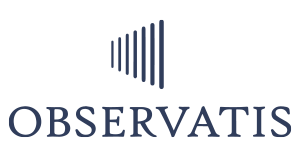The slow fade hurts more than the sudden goodbye.
Quiet quitting doesn’t announce itself—it accumulates. Before performance drops, before they leave, they disengage.
Engagement fades before performance does.
Quiet quitting isn’t about lazy employees—it’s about disengaged ones. When expectations exceed emotional investment, employees may still show up, but they’ve mentally checked out. It’s not loud, it’s not obvious—but it’s costly.
The danger of quiet quitting is its invisibility. By the time productivity drops or attrition happens, the cultural damage is already done. Organizations need to see the signs earlier—before disengagement becomes the new norm.
Not with a bang, but a whisper—this is how engagement ends.
Organizations across industries—especially in healthcare, education, and government—are grappling with a silent workforce shift. Leaders often measure performance, but they miss early signals of disengagement. Without tools that go beyond surface metrics, teams risk falling into a cycle of burnout, misalignment, and passive attrition.
Let’s address this challenge
Observatis makes the invisible, visible. Our Engagement Heatmap reveals micro-patterns of disengagement by team, department, or location—powered by real-time behavioral, sentiment, and risk indicators.
It’s not just a snapshot. It’s a dynamic lens that tracks emotional and cognitive withdrawal in context, triggering proactive alerts and interventions before performance takes a hit.
Why It Matters?
Quiet quitting costs more than turnover—it erodes morale, reduces innovation, and creates a culture of mediocrity. And because it doesn’t show up in traditional metrics, it often spreads undetected.
In a hybrid and distributed world, the ability to spot early signs of withdrawal is a competitive advantage—and a cultural safeguard.


Emerging Scientific Insights
Recent studies from MIT Sloan and the Society for Human Resource Management (SHRM) highlight that emotional detachment from work is a leading indicator of intent to leave—often appearing 3–6 months before formal resignations. Further, Gallup’s 2024 workplace report identified that 59% of employees are ‘not engaged,’ which quietly impacts innovation and collaboration before it ever hits performance reviews.
Industry Signals from Recent Research
1. Gallup’s 2023 Workplace Report
Gallup’s 2023 report indicates that 50% of U.S. employees are “not engaged,” a state often associated with “quiet quitting.” This disengagement can lead to reduced productivity and increased turnover.
2. Development of the Quiet Quitting Scale (QQS)
A study published in the National Center for Biotechnology Information introduced the Quiet Quitting Scale (QQS), a validated tool to measure employees’ disengagement levels. The QQS helps organizations identify and address early signs of disengagement.
3. Predictive Analytics in Employee Retention
Research highlights the effectiveness of predictive analytics in identifying employees at risk of leaving. By analyzing patterns in employee behavior and engagement, organizations can proactively implement retention strategies.
4. Early Warning Signs of Disengagement
McKinsey emphasizes the importance of recognizing early signs of employee disengagement, such as reduced participation and minimal effort, which can precede “quiet quitting.”
Pioneers Lighting the Path
Companies like Microsoft and SAP are pioneering early detection of disengagement through internal listening engines that go beyond pulse surveys. They’re combining productivity signals with behavioral feedback to build predictive engagement models.
The U.S. Office of Personnel Management (OPM) is also piloting federal-wide systems that integrate behavioral analytics to detect early signs of workforce withdrawal.
Your Engagement Action Blueprint
✅ Audit your current tools: Do they show emotional trends or just productivity KPIs?
✅ Start small: Map one team’s engagement weekly for 4 weeks.
✅ Layer the metrics: Compare performance with sentiment and turnover intention.
✅ Trigger conversations: If the heatmap shows disengagement, reach out before formal feedback cycles.
✅ Lead with empathy: Normalize honest check-ins and remove fear from feedback loops.
Do you know when engagement starts fading—before performance dips?
We help uncover early signs of detachment, long before it impacts your culture or metrics.
If you’re curious how your current systems could surface early disengagement signals, let’s take a look together.
Reference & Credit
Gallup – For providing comprehensive data on employee engagement trends.
National Center for Biotechnology Information (NCBI) – For the development and validation of the Quiet Quitting Scale (QQS).
ResearchGate – For insights into predictive analytics applications in employee retention.
McKinsey & Company – For strategies on identifying and addressing employee disengagement.





Anonymous
We’ve seen productivity slide in teams where no one technically quit—yet everything started slipping.
Anonymous
Quiet quitting is more cultural than individual. Excited to see a tool that recognizes systemic risk instead of blaming isolated behavior.
Anonymous
We’ve shifted from focusing solely on exits to spotting disengagement early. Glad to see this conversation going mainstream.
Anonymous
Our turnover wasn’t the issue—it was the disengagement that preceded it. This framing is exactly what we’ve needed.
Anonymous
Would be curious to know how Observatis handles hybrid and remote teams. Quiet quitting can be harder to see across Zoom windows.
betano brasil
Betano no Brasil é sinônimo de diversão! Uma plataforma completa, com muitas opções pra gente se entreter. Recomendo demais! Acesse aqui: betano brasil